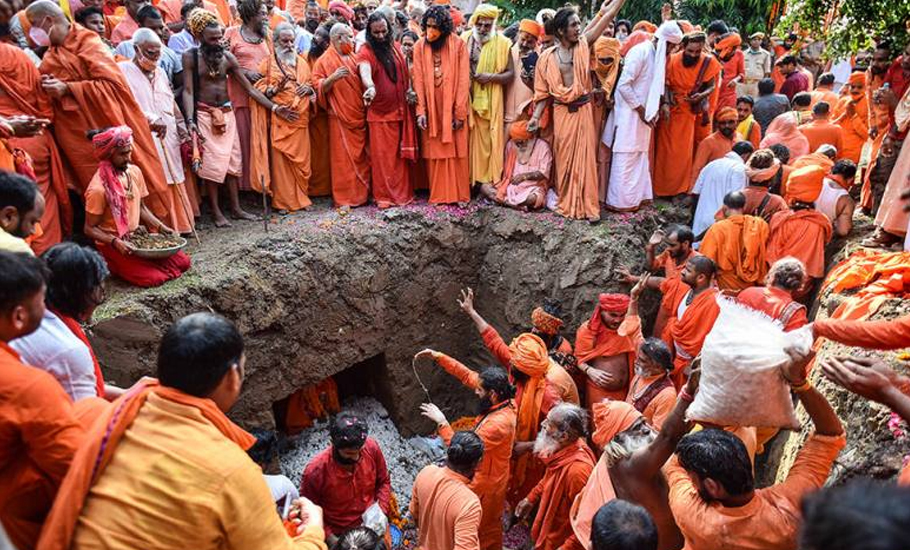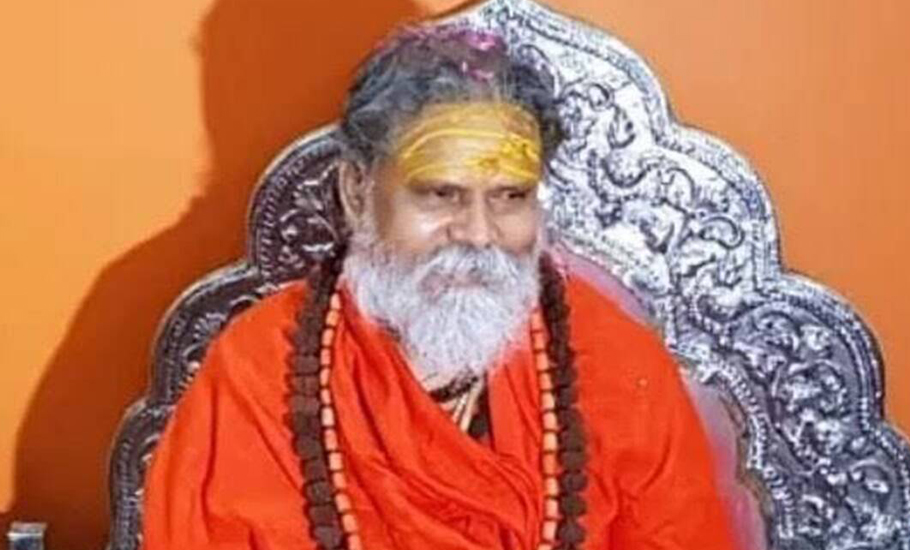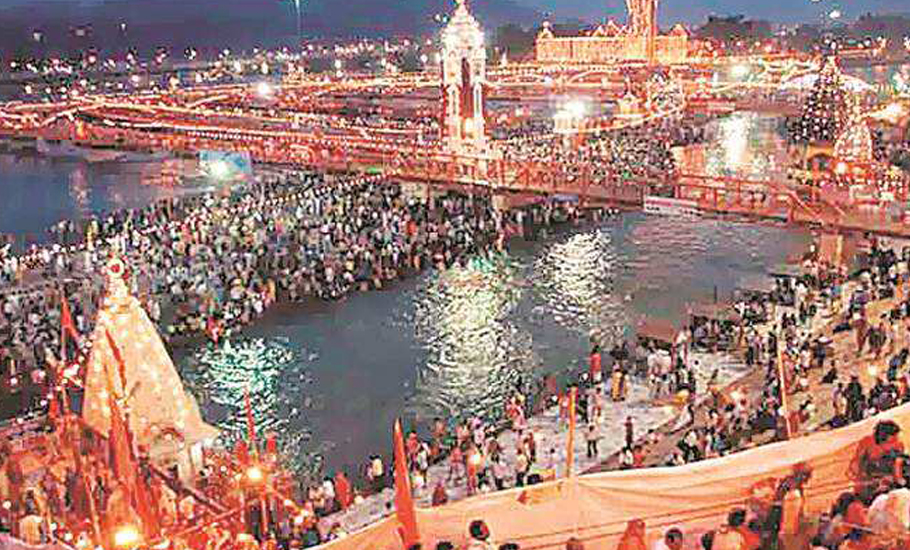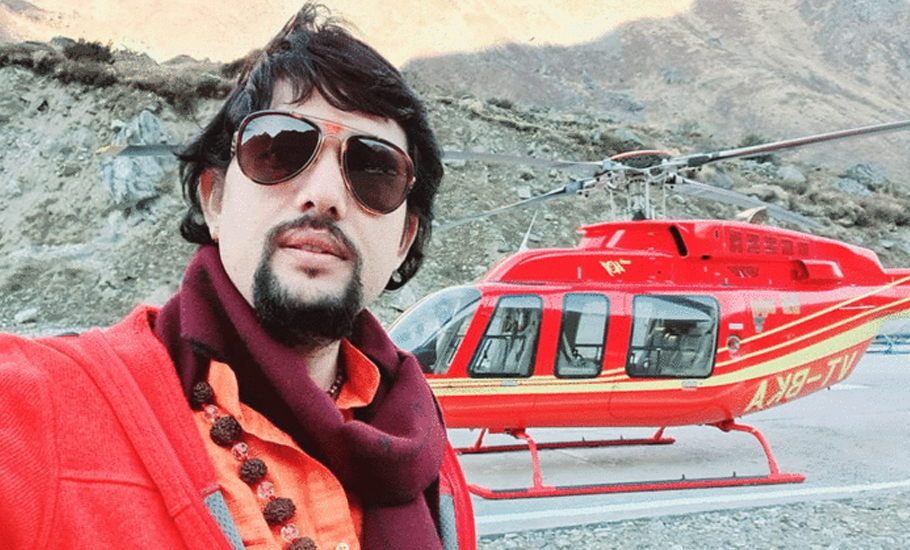
- Home
- News
- Analysis
- States
- Perspective
- Videos
- Education
- Entertainment
- Elections
- World Cup 2023
- Features
- Health
- Business
- Series
- Economy Series
- Earth Day
- Kashmir’s Frozen Turbulence
- India@75
- The legend of Ramjanmabhoomi
- Liberalisation@30
- How to tame a dragon
- Celebrating biodiversity
- Farm Matters
- 50 days of solitude
- Bringing Migrants Home
- Budget 2020
- Jharkhand Votes
- The Federal Investigates
- The Federal Impact
- Vanishing Sand
- Gandhi @ 150
- Andhra Today
- Field report
- Operation Gulmarg
- Pandemic @1 Mn in India
- The Federal Year-End
- The Zero Year
- Premium
- Science
- Brand studio
- Home
- NewsNews
- Analysis
- StatesStates
- PerspectivePerspective
- VideosVideos
- Entertainment
- ElectionsElections
- Sports
- Loading...
Sports - Features
- BusinessBusiness
- Premium
- Loading...
Premium

Narendra Giri’s death: Why mutts are facing wars from within

Never trace the origins of a river or a rishi, so goes a Tamil saying (Nadhi moolamum rishi moolamum eppodum thedathei). Yet lives of ascetics are inevitably dug into when controversies surface and muck spreads. Until then, they remain people who are revered for renouncing worldly lives. Not many, including his ardent followers, knew that Mahant Narendra Giri of Baghambari Mutt in Prayagraj was...
Never trace the origins of a river or a rishi, so goes a Tamil saying (Nadhi moolamum rishi moolamum eppodum thedathei). Yet lives of ascetics are inevitably dug into when controversies surface and muck spreads. Until then, they remain people who are revered for renouncing worldly lives.
Not many, including his ardent followers, knew that Mahant Narendra Giri of Baghambari Mutt in Prayagraj was a bank peon who found it hard to keep the job given his poor educational background. His meteoric rise within the mutt made his origin irrelevant. His alleged suicide, however, put the spotlight back on the life he had renounced and the power games that seem to mar many in mutts across India.
Rise to prominence
Narendra Giri left home as a child and took refuge at his maternal grandfather’s house. It was the grandfather who helped young Narendra find a job at the bank. Unable to keep the job, Narendra Giri had a spell of vagabond life roaming around as a sadhu. His meandering landed him in Praygraj in 1983. It was here that Narendra Giri came under the guidance of Divyanand Giri of Niranjani Akhara, a constituent of the Akhil Bharatiya Akhara Parishad, which is a conglomerate of 13 monastic orders, known as akharas. It was Divyanand Giri who initiated Narendra Giri into sannyas and that’s how he became a mahant in 1985. Narendra Giri quickly rose to prominence and came to head the Baghambari Mutt, which fell under the Niranjani Akhara, in 2006.
In 2014, Giri was elected head of the Akhil Bharatiya Akhara Parishad. He was re-elected in 2019. The runaway kid-turned-bank employee metamorphosed into a revered spiritual leader, owning hundreds of crores of material wealth.
The rise was not without its challengers. Narendra Giri found a challenger in his own disciple and deputy Anand Giri. He alleged that Mahant Narendra Giri was selling land owned by the Baghambari Mutt. An allegedly infuriated Mahant Narendra Giri filed a complaint with the mutt and that led to Anand Giri’s expulsion from the organisation. Later, the two ostensibly patched up and Anand Giri returned to the mutt. On September 6, Mahant Narendra Giri’s body and a purported suicide note blaming Anand Giri for the suicide blew the lid off what was simmering inside the mutt between the Mahant and his disciple. While some say it was suicide, others have termed it a murder calling for investigation.
Mutts, akharas and mahants
Mahant Narendra Giri’s mysterious death has turned the spotlight on mutts and akharas, mahants and sants and their strife-ridden realities. While their lives are supposed to symbolise the sacred and the sainthood, they also at times embody temporal, social and institutional power along with political clout, riding on enormous wealth. They personify renunciation in life and asceticism, but also on occasions, engage in contests over property, power and pelf.

Traditionally, the Hindu life in the monastic form is of three kinds: ashram, mutt and akhara. The ashram is a temporary institution meant for a small group. It is normally without any permanent arrangement for worship. The ashram form of life is meant not only for seers, but also for householders. The mutt is a permanent institution with permanent arrangement for worship, started by Adi Shankaracharya. Later, Ramanujacharya and Madhvacharya founded mutts. The mutt was meant for monks, spreading dharma among the people. Any guru can float a mutt but akharas are officially recognised parts of a higher institutional order.
R Vidyasagar, a social scientist based in Chennai, says, “Most of them cannot come close to a Ramana Maharishi or the former Kanchi Sankaracharya Chandrasekhara Saraswati in wielding spiritual authority. They are of a lower profile rendering conventional religious services.”
Those leading akharas and mutts in the Hindi belt are invariably from the upper castes like Swami Tufan Giri of Juna Akhara and Mahant Dinendra Das of Nirmohi Akhara, Paramanand Maharaj of Akhand Ashram, Haridwar who are from Brahmin community. Only in the case of Juna Akhara, for the first time in history, Kanhaiya Shivanand Giri, a Dalit, was made Mahamandeleshwar, a prominent mutt leader – but not a chief.
These are not single caste-based institutions like the Lingayat mutts of Karnataka. We see Brahmin mahants as well as Rajput mahants mostly dominating the mutts. For instance, Mahant Narendra Giri was a Rajput, while his estranged deputy Anand Giri and successor Balbir Giri are Brahmins.
Sants hail from intermediate castes too but they seldom get elevated to the status of mahants. For instance, former UP CM Kalyan Singh openly protested non-inclusion of members of Other Backward Classes (OBC) in the Ramjanmabhoomi Trust but he could not propose an OBC mahant of prominence. A Yadav mahant or a Kurmi mahant is unheard of in north India. A rare case was Mahant Kailashanand of Niranjani Akhara. He too could never become an Akhara chief.
Exclusive Dalit mutts are unheard of, except in the case of the Ram-Rahim cult or the small organisations swearing by Saint Ravidas. Even the Most Backward Classes (MBCs) do not have their own mutts. Of course, there are sadhus and babas from among lower castes with localised pockets of following. But they seldom acquire a universal religious stature as mutts and akharas and none from upper castes turn into their devotees or followers.
Institutional order
The close-knit following of these mutts makes them resemble clans but they are no cults like the Melmaruvathur Shakti cult in Tamil Nadu. These are primarily religious bodies rendering spiritual guidance to the people. Reflecting the ethos of the larger Hindu religion, these are different from the highly structured institutions of Christianity and Islam. There is no institutional continuity with any single unified and official institutional framework.
In Christianity and Islam, new leaders can emerge only through the centralised institutional hierarchy. But in the case of Hindu mutts, they are more diffused. Often they mushroom out of nowhere. But many of them also wilt and fade away as quickly as they emerge. A mahant is born when a mutt is born. Any senior sant can initiate a qualified junior into santhood after some specific rituals. It is their following that decides the stature of these mutts and mahants.
Importance of Kashi
These mutts are spatially concentrated in religious towns that are pilgrimage centres. Ayodhya, Haridwar, Varanasi (Kashi), Prayagraj (Allahabad), Ujjain and Jaipur are towns with high concentration of mutts. Jaipur alone has 92 akharas and mutts.
Varanasi, referred to as Kashi in Vedas, has acquired the status of headquarters of Hinduism. It has numerous local mutts like Kabir Mutt, Jangamwadi Mutt, Satua Baba Ashram among others. It is the ultimate ambition of the mutts operating elsewhere in the country to have their branch in Kashi. Their leaders won’t rise in stature unless they too travel to Kashi regularly and make their presence felt during auspicious occasions of the year. For instance, Sringeri Mutt, which is a branch of the Shankara Mutt at Sringeri in Karnataka, has its own Varanasi Srigeri Mutt branch. The rival Pejawar Mutt of Udupi, though considered a bit inferior by the Sringeri clerics, also has its branch in Kashi. Apart from these, Ramakrishna Mission has also established its own mutt in Varanasi called Sevashrama.
No religious leader aspiring for an all-India profile can rise in stature without finding a foot in Varanasi. Hence, there are mutts established by Saint Anandamayi and Tailang Swami, an associate of Swami Vivekananda, and Baba Kinaram etc. There are numerous other smaller mutts too. Some akharas, like Juna Akhara, have several small mutts under them. Each of these towns resembles a religious-industrial cluster. Each of these mutts also has hundreds of sadhus and sants, including the Naga Sadhus, as their inmates. They take lead in performing rituals.
Remnants of a riverine civilisation
Many of these religious towns are also organically linked with a river, especially one considered a holy river. They are relics of a riverside civilisation where the religious perform their daily ablutions at the river ghats with the belief that the holy river would deliver them from the karma cycle. Varanasi has around 87 ghats and we find one or more mutts near each ghat, which execute the rituals and ceremonies.
The riverside rituals peak at the time of Kumbh melas. Millions travel to these religious centres to take a dip in the holy rivers or lakes. The priests in these mutts perform specialised rituals for them on the occasion. “The mutts earn even up to 80 per cent of their yearly income during the annual kumbhs. The earnings were higher especially last time when Yogi Adityanath gave them huge cash running into thousands of crores to spend on Kumbh arrangements,” says Shiv Sevak, a corporator from Prayagraj.
An India Today report pegs the total estimated assets of Niranjani Akhara at over Rs 300 crore. The assets of other akharas are also estimated to be in that range, says Sevak. They seldom file wealth tax or income tax returns and are not supposed to declare their total assets, he adds.
Special kumbhs like Maha Kumbh held once in 144 years and Purna Kumbhs held once in 12 years assume extraordinary importance for Hindus. Different Kumbhs are held in Haridwar, Nashik, Ujjain and Allahabad. But the one held in Allahabad is the most prominent one because Prayagraj offers a confluence of the holy rivers of Ganga and Jamuna, and the unseen mythical river Saraswati.

During the last Kumbh Mela in 2018-2019, an estimated 10-14 crore people thronged there to take the holy dip. The Uttar Pradesh government had made all the arrangements for the world’s largest religious gathering mainly through the Baghambari Mutt led by Mahant Narendra Giri.
Upstart economical empires
Government patronage and individual donations have helped many mutts amass huge amounts of wealth. Many of these organisations have educational institutes running under their patronage which in turn is a source of income. A case in point are the Lingayat mutts of Karnataka which run a huge network of professional educational institutions. Government patronage comes in the form of land and also hard cash. If the UPA government sanctioned Rs 600 crore from the budget for the Rajiv Gandhi Sanskrit University under Shankara Mutt, the Narendra Modi government granted a similar amount to Poornaprajna Institute of Scientific Research managed by the Admar Mutt.
The governments in Karnataka, Chhattisgarh and Madhya Pradesh have also granted thousands of hectares of land to mutts. For instance, the land granted to Ramakrishna Mission by Karnataka government is now under litigation. Former Andhra Pradesh chief minister Chandrababu Naidu granted 400 acres of forest land to Isha Foundation.
Unlike Karnataka’s educational empires, the mutts in north India have amassed huge tracts of land. “Mutts in Varanasi reportedly get more cash income than what they earn from their landed property,” says Jaleshwar Upadhyaya, a prominent intellectual and academic. Investing this wealth into profitable avenues to fetch maximum returns makes them business savvy.
No wonder we come across graduate and even post-graduate mahants and mutt-heads, especially in Karnataka. And many get trained in the Centre for Vedic Studies, Banaras Hindu University, before becoming mahants. As wealth mounts, politics follows.
The new political clout
Historically mutts played a key role in lending legitimacy to the kings. Kings in turn bestowed the mutts with large pieces of land. Instead of direct political participation, they mostly tended to wield covert political clout. But, as historian DN Jha points out in his 2018 book Against the Grain: Notes on Identity, Intolerance and History, the direct political role of mutts became more prominent only after the Ram Mandir movement in the 1990s.
Very few maintain distance from political leaders. Apart from serving the religious and spiritual role, mutts also serve as launch pads for mahants to make it big in politics. Yogi Adityanath, a mahant in Gorakhnath Mutt, won Gorakhpur Lok Sabha seat five times in a row from 1998 and that led the Rashtriya Swayamsevak Sangh to choose him to lead the Uttar Pradesh BJP government in 2017. Lingayat mutts in Karnataka are known to be king-makers and Basavaraj Bommai, a Lingayat, was made the chief minister of Karnataka only after approval from Lingayat mutts.
Troubled transition
The mutts and akharas are supposed to represent the Hindu orthodoxy. But they have embraced modernity selectively in their own ways. Some mahants like Anand Giri, the deputy of Narendra Giri, arrested for abetting the “suicide” of Narendra Giri, move around in imported cars. Even sants, who traditionally lived on alms, deliver and listen to religious discourses on the costliest smartphones while moving around in air-conditioned Ferraris. Most of the mutts in Allahabad and Varanasi offer AC rooms and even suites for the devotees.

“The mutts and akharas are largely an urban, or at best a peri-urban, phenomenon but are rooted in rustic peasant moorings. They offer spiritual relief to soothe the agony of urban anomie and insecurity and feeling of uprootedness among the small-town elite, though of a lower order compared to media savvy billionaire corporate gurus like Sri Sri Ravi Shankar or Swami Chinmayanand with a largely metropolitan and mega city following, says Vidyasagar.
Mutts have undergone a metamorphosis in the last few decades. Their spirituality has waned. They have become dens of crime and corruption. A National Herald story says 42 sadhus have been killed in UP in four years, mostly by their own disciples.
While a lot of money flows into the mutts and akharas, there is little accounting for it. The Trusts Act and the Societies Act or other state laws governing Hindu religious and charitable institutions are too weak to curb irregularities. Thanks to their political clout, the Income Tax Department or Enforcement Directorate never raids these organisations, with the exception of a few raids conducted on mutts in Tamil Nadu and Karnataka.
In March 2021, when the IT Department issued notices for tax evasion to 13 akharas the All-India Sant Samaj threatened to take to the streets demanding that the notices be taken back by the government.
There are numerous litigations piling up in courts over property disputes within mutts. “But they are mostly from mutts located in South India. In the north, we see many cases of murders in mutts with property disputes being an angle,” says Jaleshwar Upadhyay.
Narendra Giri’s death is no aberration. It is the natural fallout of rise in unaccounted wealth and political clout.
(Author is a senior journalist based out of Prayagraj)

